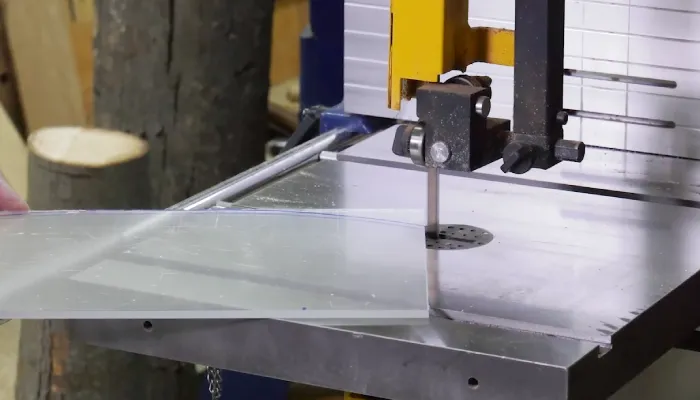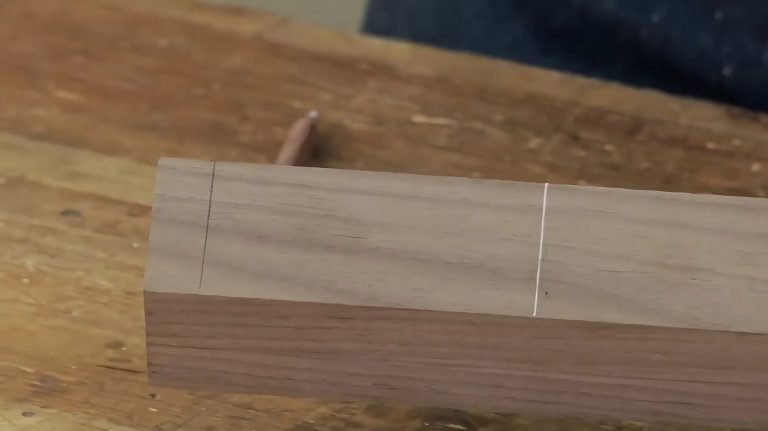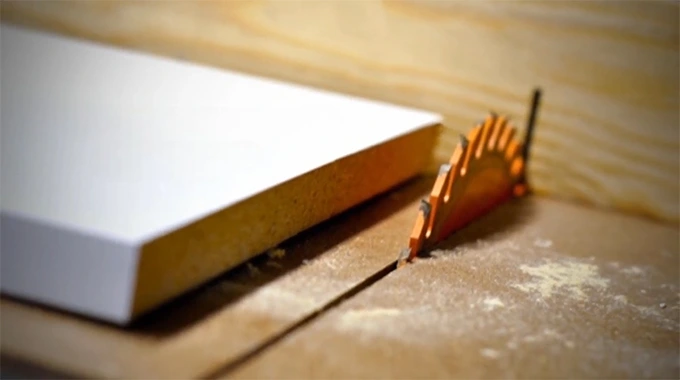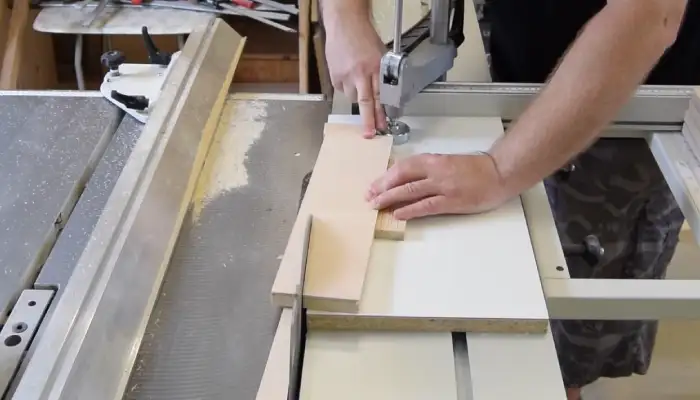Can MDF Be Used Outdoors? Tips for Lasting Results
You can use MDF outdoors, but only if you pick exterior-grade types designed to resist moisture and rot, then seal them properly to protect against weather damage.
Standard MDF soaks up water, swells, and degrades quickly when exposed to rain or humidity. Moisture-resistant versions help but still need thorough waterproof coatings and edge sealing.
With regular maintenance, treated MDF can last years outside. Keep going to discover the best materials, sealing techniques, and where exterior MDF works well.
Key Takeaways
- Standard MDF absorbs moisture, swells, and deteriorates quickly, making it unsuitable for outdoor use without protection.
- Exterior-grade MDF, properly sealed and maintained, can last up to 50 years outdoors with minimal damage.
- Moisture-resistant MDF is only suitable for damp indoor areas, not for continuous outdoor exposure.
- Applying waterproof sealants, primers, edge banding, and regular maintenance is essential for outdoor MDF durability.
- MDF is less durable outdoors than plywood or composites but can be used for decorative or sheltered outdoor applications with proper treatment.
Understanding the Nature of MDF and Its Vulnerabilities
Because MDF is made from finely ground wood fibers bonded with synthetic resins under heat and pressure, you get panels that are smooth and uniform but inherently porous.
This composition—82% wood fiber, 9% urea-formaldehyde resin, and 1% paraffin wax—gives MDF a fine, knot-free surface but leaves it vulnerable to moisture.
When exposed to water, MDF can absorb up to 52.3% moisture, causing swelling as high as 14.5%. This undermines its dimensional stability and structural integrity.
Its mechanical strength is around 10 MPa compressive strength and 24.7 MPa modulus of rupture, which degrades markedly with moisture exposure.
The urea-formaldehyde resin is especially prone to hydrolysis in humid conditions. Paraffin wax offers minimal protection.
These factors make standard MDF susceptible to fungal decay and chemical breakdown if moisture is present. Additionally, MDF’s density, typically ranging from 600 to 800 kg/m³, contributes to its overall strength and uniformity but does not prevent moisture penetration. Regular checks and adjustments are necessary to maintain dimensional stability in changing environments.
Challenges of Using Standard MDF in Outdoor Environments
When you expose standard MDF to outdoor conditions, its vulnerability to moisture quickly leads to warping, swelling, and loss of structural integrity. MDF absorbs water rapidly, causing permanent deformation like twisting and cracking. Regular maintenance is crucial to prevent these issues and prolong the material’s lifespan in challenging environments.
Standard MDF exposed outdoors absorbs moisture quickly, resulting in warping, swelling, and permanent structural damage.
Its cellulose fibers encourage mold and mildew growth, which weakens the panel and harms appearance. Additionally, untreated MDF attracts pests such as termites, further compromising strength. Weather exposure breaks down the surface, leading to peeling and erosion. Moreover, standard MDF is made with formaldehyde-based resins that emit harmful VOCs, posing health risks especially in poorly ventilated outdoor spaces. Proper storage and environmental control can mitigate some of these effects by reducing moisture exposure.
You’ll face challenges like:
- Swollen, warped panels that no longer fit together properly
- Mold and mildew stains spreading on damp surfaces
- Termite damage creating tunnels and weakening support
These issues make standard MDF unsuitable for outdoor use without significant protection and upkeep. Regular inspections and bandsaw maintenance practices are recommended if cutting or shaping MDF outdoors to ensure tool performance and safety.
Protective Measures for Outdoor Installation of MDF
Standard MDF struggles outdoors due to moisture and pests, but you can extend its lifespan with proper protective measures. Start by cleaning and drying the surface thoroughly. Sand edges for smoothness and apply a specialized MDF primer evenly, especially on edges. It is important to ensure the MDF surface is clean, dry, and dust-free before sealing to maximize protection. Using waterproof sealants designed for outdoor use can greatly enhance durability.
Seal with multiple coats of exterior-grade waterproof paint or polyurethane. Protect edges with PVC or ABS banding and seal all joints with waterproof filler. Regular maintenance, including annual resealing, keeps moisture at bay.
| Step | Action | Tip |
|---|---|---|
| Surface Prep | Clean, dry, sand, inspect | Repair defects before sealing |
| Primer & Sealant | Apply MDF primer & sealant | Use oil-based primers for edges |
| Edge Protection | Seal edges and joints | Use edge banding and waterproof filler |
Differences Between Moisture-Resistant and Exterior-Grade MDF
Moisture-resistant MDF is designed to tackle indoor humidity pretty well. It has water-repellent additives that help, but keep in mind, it’s not meant for constant wet conditions. So, if you’re thinking about using it in a bathroom or kitchen, it’s a good option, but don’t expect it to hold up if it’s soaked regularly. It is important to remember that moisture-resistant MDF is not fully waterproof and performs best in environments with occasional moisture contact.
Now, if you’re looking at something for outdoor projects, that’s where exterior-grade MDF comes in. This type is built with tougher glue and denser fibers, so it can handle outdoor exposure and pests much better.
When you’re deciding between the two, just remember to consider how each one performs under different weather conditions and moisture levels. That way, you’ll be sure to pick the right material for your project!
Moisture-Resistant MDF Features
How does moisture-resistant (MR) MDF differ from exterior-grade MDF?
MR MDF includes water-repellent agents and moisture-resistant resins, unlike standard MDF.
However, it’s not designed for direct outdoor exposure.
It resists humidity and occasional moisture but won’t withstand prolonged water contact or weather conditions.
You’ll find MR MDF ideal for damp interiors like bathrooms or kitchens, thanks to its reduced swelling and high internal bond strength.
Key MR MDF features include:
A distinctive green core for easy identification and compliance with standards like ANSI MR10.
Thickness swelling limited to 5.5–18.6% after 24-hour water immersion, much better than standard MDF.
Smooth, dense surface that’s paint-ready and machinable, with low formaldehyde emissions suitable for indoor use.
Additionally, MR MDF boards typically have a density ranging from 710–820 kg/m³ which contributes to their robustness in humid environments.
Despite these advantages, MR MDF lacks the heavy-duty construction needed for prolonged outdoor use, which affects its durability in exterior conditions.
Exterior-Grade MDF Benefits
While moisture-resistant MDF handles indoor humidity well, it falls short when exposed to constant outdoor elements.
Exterior-grade MDF, however, is engineered with water-resistant resins and high-quality wood fibers, making it denser and stronger. Its enhanced formulation allows it to form a water-resistant barrier, improving longevity in outdoor conditions.
You’ll find it resists warping, swelling, fungal decay, and termite damage much better than moisture-resistant types.
Plus, some variants include UV resistance, which is essential for sun and weather exposure.
This makes exterior-grade MDF ideal for outdoor furniture, cladding, or decorative uses.
It also maintains dimensional stability longer, reducing common issues found in moisture-resistant MDF when exposed to rain or temperature changes. Its smooth surface suitable for painting and finishing allows for a high-quality aesthetic finish that mimics solid wood.
Just remember, to maximize its lifespan outdoors, you’ll need to apply proper sealing and regular maintenance.
Though more expensive, its durability and versatility justify the cost for outdoor projects.
Performance Comparison Outdoors
Although both moisture-resistant and exterior-grade MDF offer some protection against humidity, their performance outdoors differs markedly. Proper sealing and maintenance are crucial, as untreated surfaces may degrade or lose integrity over time due to environmental exposure and moisture penetration.
Moisture-resistant MDF isn’t designed for direct exposure to rain or standing water and requires sealants for any outdoor use. Applying finishes that create a waterproof, inert film can enhance durability but does not substitute for using materials designed for exterior applications.
Exterior-grade MDF, however, stands up well to outdoor conditions without extra protection, offering long-term durability and resistance to rot and swelling. Medex® is an example of a high-performance MDF panel that features superior strength and moisture resistance, making it a suitable choice for humid environments.
When choosing, consider these contrasts:
Moisture-resistant MDF swells and warps if exposed to prolonged moisture; exterior-grade MDF remains stable even in rain and snow.
Moisture-resistant MDF demands frequent maintenance; exterior-grade MDF needs minimal upkeep.
Moisture-resistant MDF has a shorter lifespan outdoors; exterior-grade MDF can last up to 50 years above ground.
You’ll want exterior-grade MDF for reliable, low-maintenance outdoor projects.
Comparing MDF With Other Exterior Wood and Composite Materials
When you take a look at MDF and MDO plywood, it really stands out that MDO has some solid advantages, especially when it comes to moisture resistance and durability for outdoor projects. It’s definitely a go-to if you’re considering something for exterior use, especially given its enhanced cutting capacity for thicker, treated materials.
Now, if we throw synthetic boards into the mix, like wood-plastic composites, things get even more interesting. These materials really shine when it comes to resisting rot and they also tend to require a lot less maintenance.
However, MDF is not suitable for outdoor projects as it cannot come into contact with water without swelling and damage.
MDF vs MDO Plywood
How do MDF and MDO plywood differ when it comes to exterior applications?
MDF is a dense wood fiber panel that absorbs moisture easily, causing swelling and warping outdoors. Its composition often includes urea-formaldehyde, which can pose health concerns during cutting and shaping.
MDO plywood, however, features a plywood core overlaid with a resin-rich MDF-like veneer, offering superior structural strength and weather resistance.
MDO’s surface is designed to hold paint well and withstand outdoor conditions, while MDF lacks these protective qualities.
Consider this:
MDF panels swell and degrade quickly if exposed to rain or humidity.
MDO panels resist moisture and maintain shape due to plywood core and resin overlay.
MDO’s smooth, paintable surface prevents grain telegraphing, ideal for exterior finishes.
If you need durable, stable wood for outdoor use, MDO plywood outperforms MDF by a wide margin.
Synthetic Boards Comparison
Since MDF struggles with moisture and outdoor durability, you’ll want to compare it carefully to other synthetic boards like wood plastic composites (WPC) and exterior-grade fiberboards before choosing materials for exterior projects. Rear handle circular saws, known for their enhanced precision and control, can help ensure cleaner cuts when working with various materials.
WPC offers superior moisture resistance and durability, making it ideal for decking and cladding. Exterior-grade MDF improves on standard MDF but still needs sealing and maintenance. MDF is made from wood fibers and resin compressed into dense boards, which gives it a uniform density and smooth surface.
Here’s a quick comparison to help you decide:
| Material | Key Outdoor Features |
|---|---|
| MDF | Smooth finish, affordable, moisture-sensitive |
| WPC | Moisture-resistant, durable, low maintenance |
| Exterior-grade MDF | Treated for moisture, needs sealing |
| Particleboard | Poor moisture resistance, not recommended |
| Solid Wood | Strong, durable, needs maintenance |
Choose materials based on exposure and maintenance willingness.
Durability and Moisture Resistance
Although MDF offers a smooth finish and affordability, it doesn’t hold up well against moisture and outdoor conditions compared to other materials. Proper preparation of the surface and sealing is essential to improve its outdoor performance.
Standard MDF swells and warps quickly when exposed to rain or humidity. Exterior-grade MDF improves resistance but still requires sealing and maintenance to last. Premium MDF features more uniform density throughout the panel thickness, which can slightly enhance moisture resistance but does not eliminate the need for protective coatings.
Compared to MDF, exterior plywood and pressure-treated lumber are far more durable, resisting moisture, rot, and insects more effectively. Using pressure-treated lumber ensures better durability in ground contact and wet environments.
Composite materials outperform them all, offering long-term moisture resistance without swelling or decay.
Consider these points when choosing materials for outdoor use:
- Plywood maintains strength and resists delamination in wet conditions.
- Pressure-treated lumber endures ground contact and prolonged exposure.
- Composites don’t swell, rot, or require frequent upkeep.
You’ll find MDF less reliable outdoors unless carefully protected.
Techniques and Materials for Waterproofing MDF
When working with MDF outdoors, you need to use specific techniques and materials to guarantee it stays waterproof and durable.
Start by sanding the surface lightly to remove loose fibers. Then apply a latex or MDF-specific primer on both sides using a roller for flat areas and a brush for edges. This initial treatment is essential because standard MDF is not waterproof and vulnerable to moisture damage. Using a moisture-resistant sealant can significantly extend the lifespan of MDF when exposed to outdoor conditions.
Begin with light sanding, then prime both sides using a roller for flats and a brush for edges.
Once dry, add multiple coats of moisture-resistant sealants like polyurethane or epoxy, allowing proper drying time between layers.
Pay special attention to edges, drill holes, and cut areas by applying waterproof edge sealers to prevent moisture penetration.
For extra protection, consider covering MDF with laminate or melamine sheets, sealing all edges carefully.
Even moisture-resistant MDF requires these treatments outdoors.
Finally, use water-repellent paints or varnishes on all surfaces to reduce warping and maximize durability.
Practical Outdoor Applications for Treated MDF
If you want durable and moisture-resistant materials for your outdoor projects, treated MDF offers versatile options that suit a wide range of applications.
You can rely on exterior-grade MDF like Tricoya® and Armorite for cladding, trim, cabinetry, and outdoor furniture.
These products resist rot, decay, and insect damage, maintaining stability without extra waterproofing.
They provide smooth surfaces ideal for paint or weather-resistant finishes, ensuring longevity in humid or exposed conditions.
Practical uses include outdoor benches, garden cabinets, and kitchen doors that hold up to moisture.
Decorative trim, soffits, and fascia boards offer a fine finish and dimensional stability.
High-visibility signage and routed panels are designed to withstand weather elements.
Treated MDF simplifies cutting and installation, making it a smart choice for your exterior projects.
Additionally, these panels come with a no-added formaldehyde (NAF) formulation for safer indoor and outdoor use.
Cost and Maintenance Considerations for Exterior MDF Use
Since exterior MDF requires specialized treatment and maintenance to withstand outdoor conditions, you should expect higher upfront costs compared to standard indoor MDF.
Exterior-grade MDF like Armorite or Tricoya commands premium prices, often matching mid-range exterior plywood, due to advanced moisture-resistant technology.
Exterior-grade MDF such as Armorite or Tricoya carries premium prices comparable to mid-range exterior plywood due to moisture resistance.
Installation labor typically runs $160 to $300 per hour, with an additional $75 to $100 for tools and supplies.
Maintenance involves sealing or painting with weather-resistant coatings to prevent swelling, warping, and fungal growth. Proper ventilation is essential when working with MDF outdoors to minimize health risks from dust and fumes.
While untreated MDF outdoors deteriorates quickly, treated options can last over 10 years with proper upkeep, reducing long-term costs.
Regular inspections and occasional repainting are necessary to preserve durability.
Although initial expenses are higher, the extended lifespan and moisture resistance help balance total ownership costs compared to cheaper, less durable alternatives.
Frequently Asked Questions
Can MDF Be Recycled or Repurposed After Outdoor Use?
You can repurpose outdoor MDF, but recycling it’s tough due to moisture damage and chemical additives.
If the MDF hasn’t warped or swollen, you can sand and reseal it for indoor non-structural uses like decorative panels or crafts.
Recycling options are limited since most facilities won’t accept weathered MDF.
Using it as fuel is possible but regulated. Always separate it from pure wood waste to avoid contamination and consider eco-friendly alternatives next time.
What Are the Environmental Impacts of Using MDF Outdoors?
Imagine MDF swelling and warping under relentless rain, breaking down and releasing chemicals into soil and water.
Using MDF outdoors harms the environment by accelerating waste buildup since moisture damages it quickly, making recycling tough.
You’ll also face fungal growth that contaminates ecosystems.
Plus, traditional MDF’s formaldehyde emissions worsen air and soil quality.
Choosing moisture-resistant, eco-friendly MDF variants helps reduce these impacts and extends product life, cutting environmental harm.
How Does Temperature Fluctuation Affect MDF Outdoors?
Temperature fluctuations cause MDF to expand and contract, leading you to face warping, cracking, or delamination over time.
When temperatures swing rapidly, internal stress builds up, increasing surface splitting risks. High heat accelerates resin breakdown, weakening the board.
Cold temperatures make MDF brittle and prone to damage. If you’re using MDF outdoors, these effects shorten its lifespan unless you take steps like sealing and shading to reduce thermal stress.
Are There Specific Tools Recommended for Cutting Exterior-Grade MDF?
Think of cutting exterior-grade MDF like crafting a fine sculpture. You’ll want the right chisels.
Use power tools like circular saws, table saws, jigsaws, or routers equipped with carbide-tipped blades boasting 60+ teeth for smooth cuts.
Fine-tooth jigsaw blades (7–12 TPI) with down-cutting edges reduce surface damage.
Always clamp your MDF securely and score cut lines first to prevent tear-out.
Avoid hand tools except for minor touch-ups.
Can MDF Be Safely Used in Outdoor Playground Equipment?
You shouldn’t use MDF for outdoor playground equipment because it absorbs moisture, swells, and weakens quickly, posing safety risks like collapse or sharp edges.
If you must use MDF outdoors, limit it to decorative, non-structural parts and apply high-quality sealants regularly.
Instead, select treated wood, metal, or plastic materials designed for outdoor use to guarantee long-lasting safety and durability in playground settings.
Choose the Right MDF for Outdoor Projects
Using MDF outdoors is like carrying an umbrella in a storm; you can do it, but only if you take the right precautions.
Standard MDF isn’t built for moisture or weather exposure, so you’ll need moisture-resistant or exterior-grade options, plus thorough waterproofing.
With proper sealing and maintenance, treated MDF can work for some outdoor projects. However, weigh the costs and upkeep against more durable materials to make the smartest, long-lasting choice for your needs.







